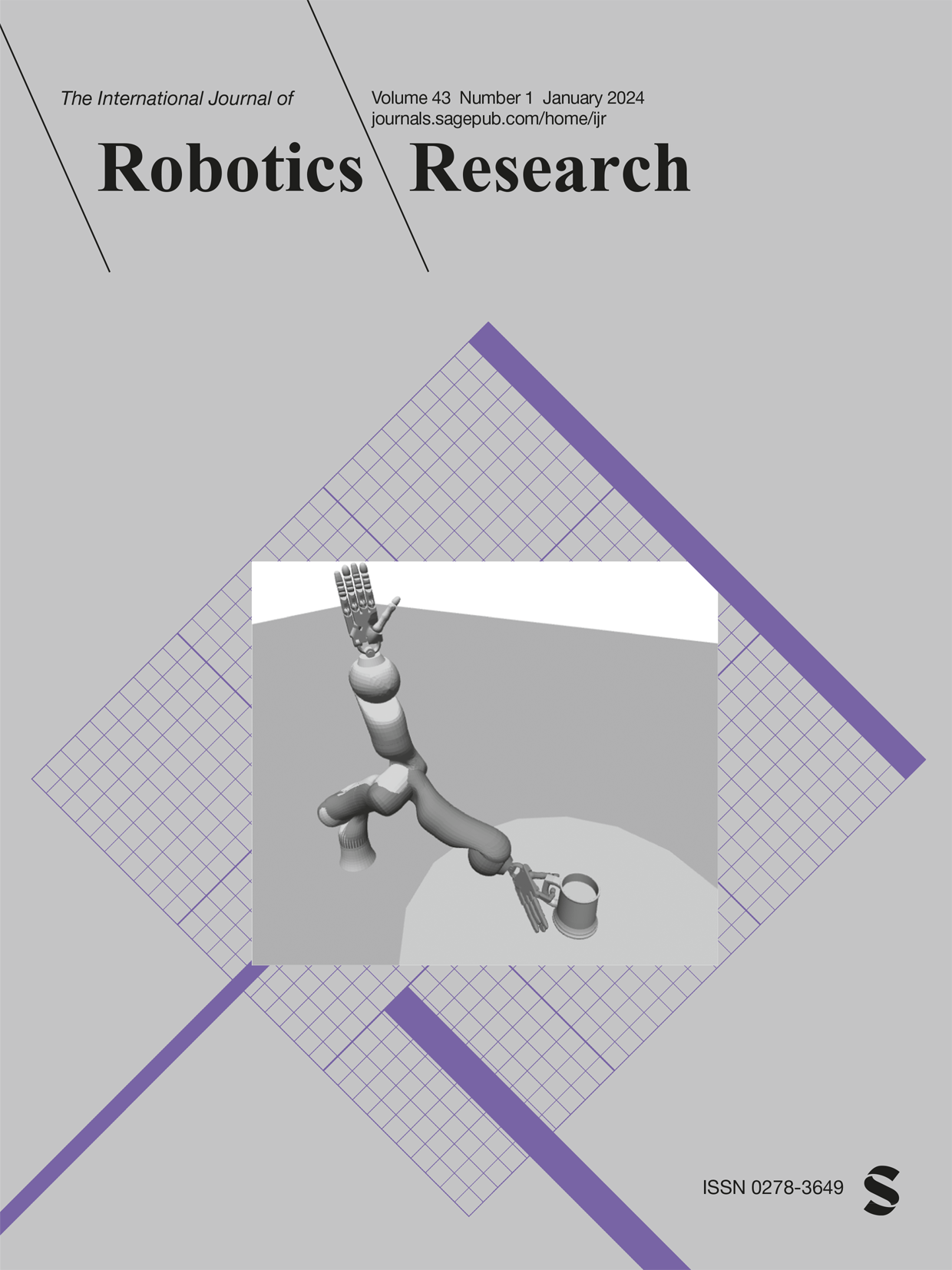A structured prediction approach for robot imitation learning
IF 5
1区 计算机科学
Q1 ROBOTICS
引用次数: 0
Abstract
We propose a structured prediction approach for robot imitation learning from demonstrations. Among various tools for robot imitation learning, supervised learning has been observed to have a prominent role. Structured prediction is a form of supervised learning that enables learning models to operate on output spaces with complex structures. Through the lens of structured prediction, we show how robots can learn to imitate trajectories belonging to not only Euclidean spaces but also Riemannian manifolds. Exploiting ideas from information theory, we propose a class of loss functions based on the f-divergence to measure the information loss between the demonstrated and reproduced probabilistic trajectories. Different types of f-divergence will result in different policies, which we call imitation modes. Furthermore, our approach enables the incorporation of spatial and temporal trajectory modulation, which is necessary for robots to be adaptive to the change in working conditions. We benchmark our algorithm against state-of-the-art methods in terms of trajectory reproduction and adaptation. The quantitative evaluation shows that our approach outperforms other algorithms regarding both accuracy and efficiency. We also report real-world experimental results on learning manifold trajectories in a polishing task with a KUKA LWR robot arm, illustrating the effectiveness of our algorithmic framework.机器人模仿学习的结构化预测方法
我们提出了一种结构化的预测方法,用于机器人模仿学习。在机器人模仿学习的各种工具中,监督学习已经被观察到具有突出的作用。结构化预测是监督学习的一种形式,它使学习模型能够在具有复杂结构的输出空间上运行。通过结构化预测的镜头,我们展示了机器人如何学习模仿不仅属于欧几里得空间而且属于黎曼流形的轨迹。利用信息论的思想,我们提出了一类基于f散度的损失函数来测量演示和再现的概率轨迹之间的信息损失。不同类型的f散度会产生不同的政策,我们称之为模仿模式。此外,我们的方法能够结合空间和时间轨迹调制,这是机器人适应工作条件变化所必需的。我们将我们的算法与最先进的轨迹复制和适应方法进行比较。定量评估表明,我们的方法在准确性和效率方面都优于其他算法。我们还报告了使用KUKA LWR机械臂在抛光任务中学习流形轨迹的实际实验结果,说明了我们的算法框架的有效性。
本文章由计算机程序翻译,如有差异,请以英文原文为准。
求助全文
约1分钟内获得全文
求助全文
来源期刊
CiteScore
22.20
自引率
0.00%
发文量
34
审稿时长
6-12 weeks
期刊介绍:
The International Journal of Robotics Research (IJRR) has been a leading peer-reviewed publication in the field for over two decades. It holds the distinction of being the first scholarly journal dedicated to robotics research.
IJRR presents cutting-edge and thought-provoking original research papers, articles, and reviews that delve into groundbreaking trends, technical advancements, and theoretical developments in robotics. Renowned scholars and practitioners contribute to its content, offering their expertise and insights. This journal covers a wide range of topics, going beyond narrow technical advancements to encompass various aspects of robotics.
The primary aim of IJRR is to publish work that has lasting value for the scientific and technological advancement of the field. Only original, robust, and practical research that can serve as a foundation for further progress is considered for publication. The focus is on producing content that will remain valuable and relevant over time.
In summary, IJRR stands as a prestigious publication that drives innovation and knowledge in robotics research.

 求助内容:
求助内容: 应助结果提醒方式:
应助结果提醒方式:


